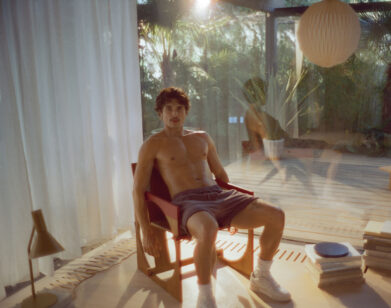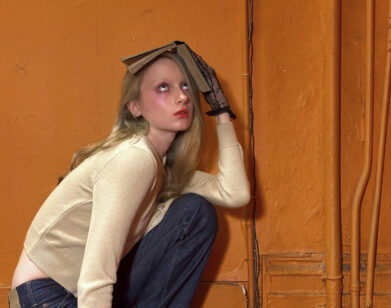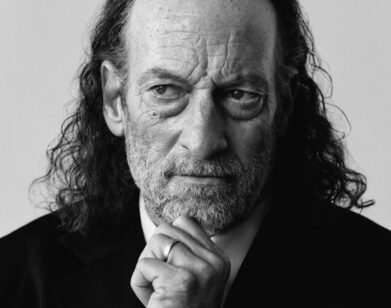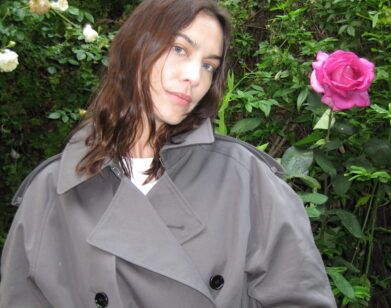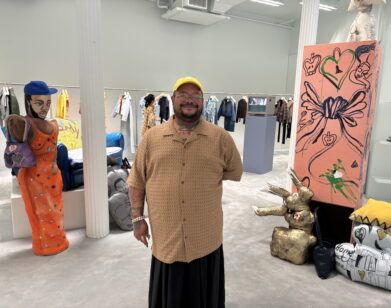Exclusive Video Premiere: ‘La Sombra’
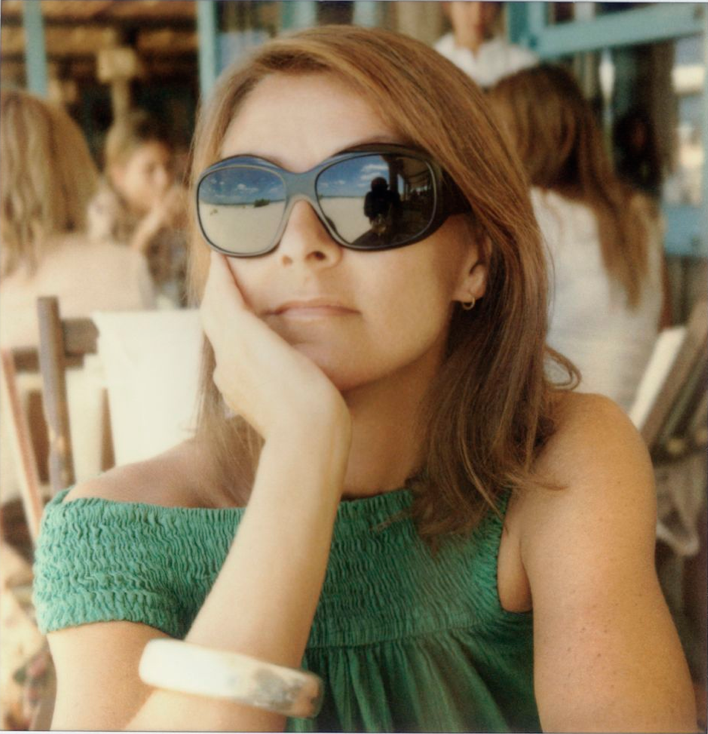
ABOVE: TIGGY MACONOCHIE IN URUGUAY.
Since her time in the mid-’80s working at then-du jour London-based Hamilton Gallery, exhibiting photographers including Horst and Helmut Newton, legendary photo agent Tiggy Maconochie has been a spontaneous player. During a revolutionary time for the medium, she pioneered the photography “review,” catapulting it from “craft” to acknowledged art form. Her charisma helped—and landed her on Simon Le Bon’s round-the-world boat trip, at parties with Marianne Faithfull, and as companion, confidante, and trusted friend to some of the most iconic photographers of the 20th century.
Maconochie still works with Helmut Newton’s estate and represents Horst, Michael Roberts, Mike Figgis, and Newton’s wife, Alice Springs. But this season, she’s segueing into a second career act, as a knitwear designer—with an unusual strategy. Born near Scotland’s famous wool mills, and now dividing her time between London and Uruguay (the world’s third-largest wool exporter), Maconochie had an epiphany on horseback while riding through the “caught-in-time” territories of Montevideo. The idea: to give Uruguay and the many emerging creative talents of the area a voice and an international presence, by way of her new knitwear label, Garzón, named after the neighboring “ghost town.”
Maconochie’s goal for the line is to produce “slow fashion for a fast world,” an ethos that’s easy to love—the designer was chosen by the British Fashion Council to be the sole representative for Uruguay at the International Fashion Showcase during London Fashion Week. All the pieces in her debut collection are constructed using the softest luxury merino and traditional handmade knitting techniques that employ the skills of local cooperatives.
As part of the immersive exhibit of this debut collection, Maconochie turns auteur, director, and producer for a short, semi-autobiographical film, shot through ViewFinder rather than digitally. We are pleased to premiere La Sombra here; afterward, read on for our chat with Maconochie about the film and the line.
DAVINA CATT: Why did you decide to put together this short film to celebrate the Garzón collection? Tell me about the inspiration behind using this visual form.
TIGGY MACONOCHIE: I believe fashion is about exuding an emotion. The modern world has become so technical that through a short film, I felt I could best engage viewers, transport them with a passion and flavor of this untouched region—where traditions and culture still exist, yet it is locked in its own nostalgic romance. Horses are tied to the rail at the train station in the ghost town, Garzón, and the gauchos show impeccable style, proud to dress in their traditional attire. The film is best defined as about poise, passion, and elegance—and communicating that quality to those caught up in the rush of the metropolis.
CATT: I came away feeling I know a little of the spirit of the Uruguayan region. Talk me through the aspects and experiences of making the film.
MACONOCHIE: It is really a mélange of the aspects my eye was drawn to. I got two tango dancers to dance, both on my patio and in the main square, Plaza de Garzón—tango actually originated in Uruguay, not Buenos Aires as widely believed. I am on horseback, where I always have my best ideas, and catching the lighting of the region at the right time to produce a stark contrast in definition between the dancers and the shadows on the pink gravel in the square.
The film didn’t actually take a long time to make—the dancers only had two hours. However, I did end up shooting myself on the horse many times because the challenge was to ride at the right time to catch the shadow without losing momentum. I found myself running around on a stepladder trying to avoid them! [laughs]
The film is set to Tango Emancipación, the dramatic arrangements of famed Argentine tango musician, Osvaldo Pugliese. It really is a composite of my life in Uruguay, communicated in a semi abstract way, best explained by Hudson’s line in Purple Land: “The dark as well as the light, its sweet and its bitter, that is what makes me love it.”
CATT: Talking of references, it must have been challenging as the first designer out of Uruguay to have no design reference points?
MACONOCHIE: Yes, very! [laughs] I start with a blank page and just keep returning to my vision to create clothes for interesting women who have interesting lives, from 18 to 80. I want to rewrite the story on wool—to celebrate this material, which man has been wearing for the past 1000 years—and to re-educate people that it can have waist shape and be stylish yet functional enough to take you from day to evening. I think the pieces have a semi-bespoke identity of their own—the capes with horn pincers take a week to make and are made up of one and a half kilograms of wool.
CATT: Would you work with the film medium again? How does this new means of visual communication compare with photographic image to you?
MACONOCHIE: Yes, I already have plans to work on more short films—the next is based on the Gabriel Garcia Marquez short story “Tuesday Siesta.” These “shorts” are like photography—universal. Little or no language is needed to engage or understand. [My] enjoyment of Garzón and this project [comes from] the chance it has given me to actually express and execute my ideas, rather than keeping my creativity in the background!
FOR MORE ON GARZÓN, VISIT ITS WEBSITE.

